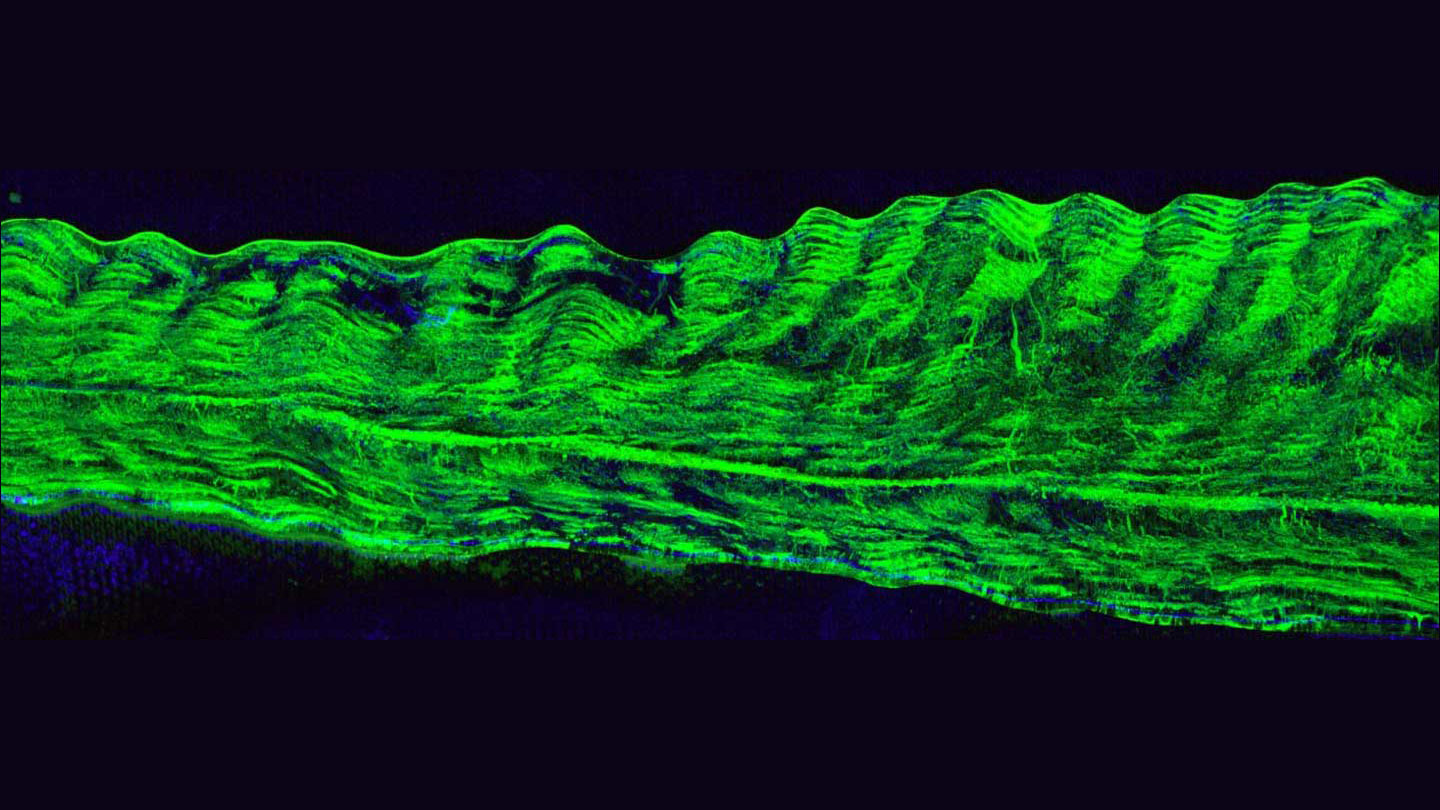Tiny drops of dirty water, often mistaken for air bubbles, tell the tale of rippling icicle growth.
Icicles made of pure water are smooth. But salt or other impurities make icicles develop ripples as they hang from branches, bridges and power lines (SN: 11/24/13). Impurities are also responsible for the hazy appearance of icicles that has typically been attributed to air bubbles. Those bubbles are actually minute dollops of contaminated water, researchers report in the November Physical Review E.
While examining 3-millimeter-thick cross sections of icicles grown in the lab, University of Toronto physicists Stephen Morris and John Ladan uncovered pockets of impure, liquid water surrounded by relatively pure ice (SN: 8/13/10). “It turns out that there are very few air bubbles in an icicle,” Morris says. He calls the water pockets “inclusions” to distinguish them from air bubbles.
What’s more, “the inclusions record the history of the growth of the ripples. It’s like the rings in a tree,” Morris says. Inclusions form in layers near the surface of an icicle, with older layers covered by younger ones as an icicle grows. “You can deduce something about the history of the growth by looking at the pattern of inclusions.”
To track icicle formation, the researchers mixed fluorescent dye into water in place of other types of impurities and used the water to grow icicles in the lab. The dye ended up concentrating at higher levels in liquid inclusions in the icicles, just as any other contaminant would. It also glowed brightly under ultraviolet light, which made the inclusion layers easier to see.
By varying the dye concentration in the water, the researchers showed one way that impurities affect the patterns of icicle ripples (SN: 10/10/02). All it took was contamination comparable to that in tap water, Morris says, “before they change their shape from smooth to ripply.”
The underlying reasons that contaminants lead to ripples aren’t yet clear. As an experimentalist, Morris says, that’s a puzzle he’ll leave to theorists.














